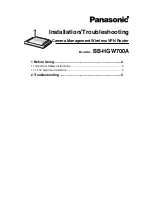
1-27
To do…
Use the command…
Remarks
Set the status of the secondary
RADIUS accounting server
state
secondary accounting
{
active
|
block
}
The server status set by the
state
command cannot be saved in the configuration file and will be
restored to
active
every time the server restarts.
Configuring Attributes Related to Data to Be Sent to the RADIUS Server
Follow these steps to configure the attributes related to data to be sent to the RADIUS server:
To do…
Use the command…
Remarks
Enter system view
system-view
—
Enable the RADIUS trap
function
radius trap
{
accounting-server-down
|
authentication-server-down
}
Optional
Disabled by default
Create a RADIUS scheme and
enter RADIUS scheme view
radius scheme
radius-scheme-name
Required
Not defined by default
Specify the format of the
username to be sent to a
RADIUS server
user-name-format
{
keep-original
|
with-domain
|
without-domain
}
Optional
By default, the ISP domain
name is included in the
username.
Specify the unit for data flows or
packets to be sent to a RADIUS
server
data-flow-format
{
data
{
byte
|
giga-byte
|
kilo-byte
|
mega-byte
}
|
packet
{
giga-packet
|
kilo-packet
|
mega-packet
|
one-packet
} }*
Optional
The defaults are as follows:
byte
for data flows, and
one-packet
for data packets.
In RADIUS
scheme view
nas-ip ip-address
quit
Set the
source IP
address of the
device to
send RADIUS
packets
In system view
radius nas-ip ip-address
Use either command
By default, the outbound port
serves as the source IP
address to send RADIUS
packets
















































